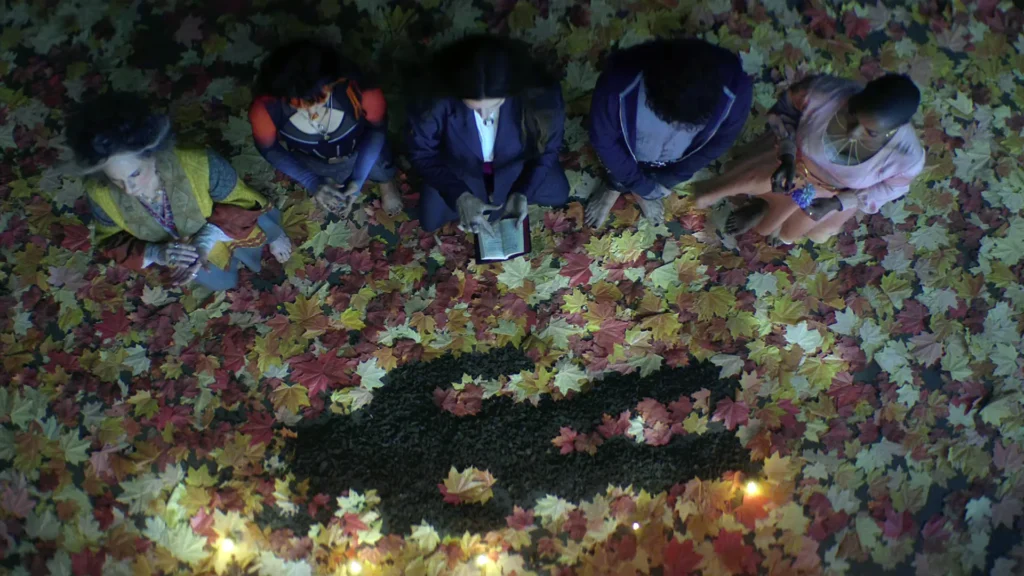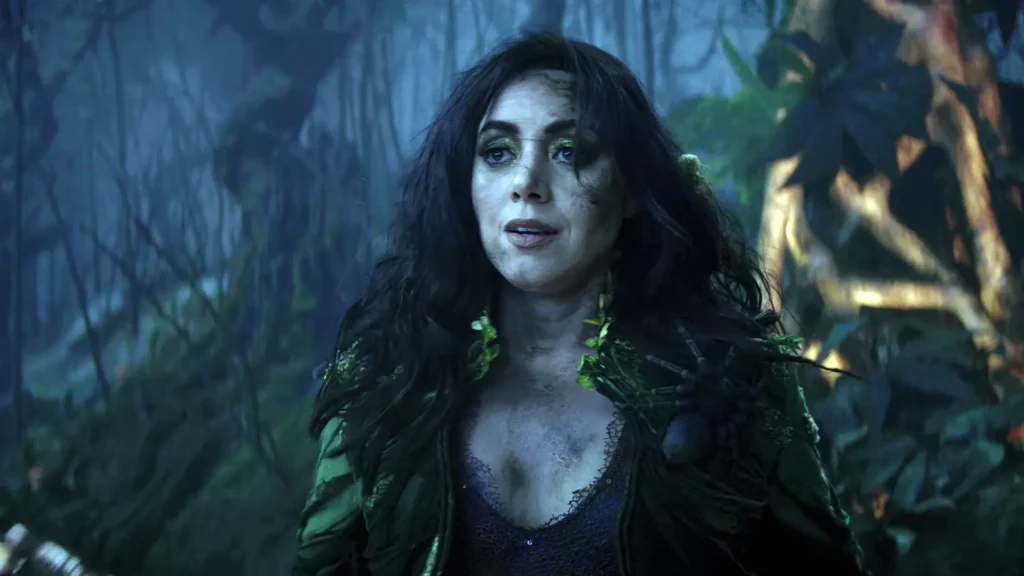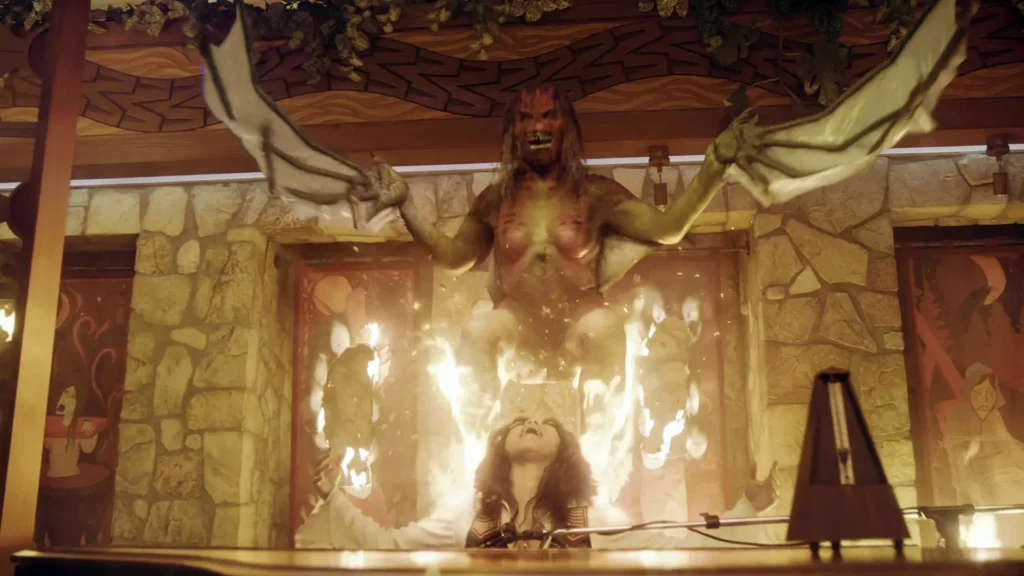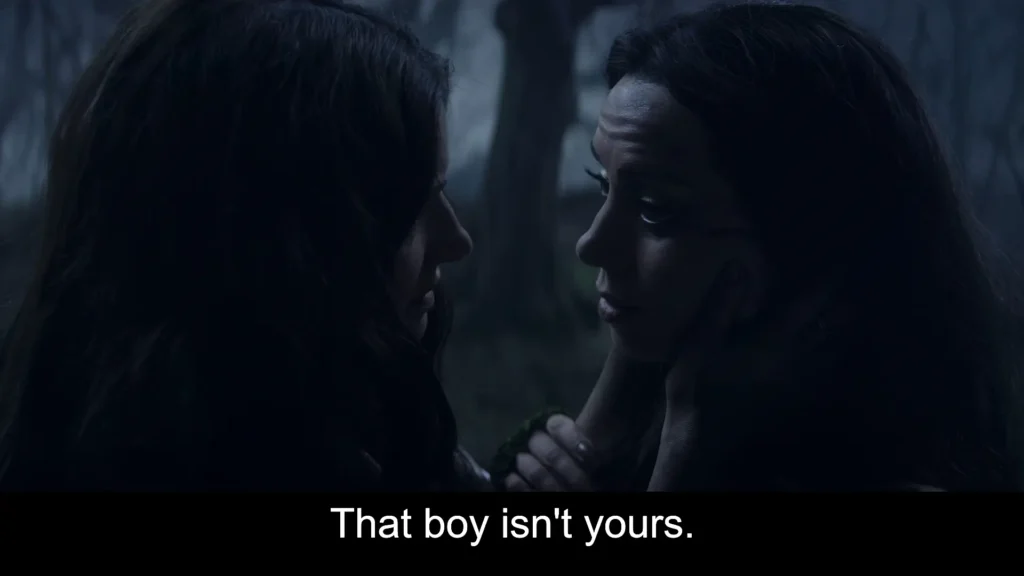Marvel Studios has long been known for its impressive ability to juggle massive franchises, but Agatha All Along stands out as perhaps one of the boldest creative risks Marvel has ever taken. Episode 4, titled “If I Can’t Reach You, Let My Song Teach You,” gives fans a unique blend of rock music, witchcraft, and supernatural trials—all while paying homage to Marvel’s deeper, darker mythology. Let’s dive into the Easter eggs, references, and nuanced details from this episode that you may have missed.
The Episode Title: Rock History and Magic Collide
The title of Episode 4, “If I Can’t Reach You, Let My Song Teach You,” is a line from The Witches Road, a ballad penned by Lorna Woo, the late mother of Alice Woo. Unlike previous episodes where the lyrics of the song were tied to a sacred chant, this version of the song is part of the rock rendition sung by Lorna herself. This change in music style sets the tone for the episode, which revolves around music and its connection to magic. The thematic link between music and witchcraft runs deep, with this episode drawing clear inspiration from the power that music has to protect, heal, and even summon forces beyond our understanding.
Opening Scene: Agatha’s Transformation and Symbolism
The episode opens with a haunting visual of Agatha standing over Sharon’s body, looking down with cold indifference. This scene is a direct callback to earlier episodes where Agatha exhibited similar behavior towards Wanda in WandaVision. But why does Agatha remain so unaffected by Sharon’s death, yet later show deep concern for Teen? This contrast reveals a complexity to Agatha’s character that wasn’t fully explored before. She remains villainous, but small glimpses of her softer side are starting to emerge, making her more humanized and relatable.
Agatha’s indifference to Sharon also raises questions about Sharon’s significance. In an earlier episode, it was hinted that Sharon may have been more than just a neighbor—that she might have possessed innate magical powers, which explains her importance in opening the gates to the witches’ road. This theory is supported by Agatha’s repeated misnaming of Sharon, a subtle nod to her general disregard for the people she uses in her magical schemes.
Coven Dynamics: The Power of True Witches
The structure of this coven is at the heart of the episode’s narrative. Jennifer, one of the witches, points out that they still need a Green Witch for the trials, and it’s implied that each trial tests the expertise of one specific witch. Jennifer’s observation about coven dynamics, particularly her role in previous trials, suggests that the survival of the group hinges on each witch fulfilling her part.

This need for a full and “true” coven is further emphasized by Agatha’s past experiences on The Witches Road. In a crucial moment, Agatha corrects a line from The Ballad of Witches Road, saying it should be “coven two,” not “coven true”. This change, though seemingly trivial, hints at Agatha’s isolation and past experience on the road. Could Agatha’s reference to a previous journey with just one other witch be tied to her son, Nicholas Scratch, who remains a key mystery in the show?
Trauma and Generational Curses: Alice’s Burden
One of the most poignant subplots of this episode revolves around Alice and her deep connection to her family’s generational curse. Alice, a fire witch, carries the physical and emotional scars of her mother’s death, symbolized by the fire emblem she wears on her jacket. The generational curse theme is central to the story, particularly as Alice struggles with her belief that she is somehow responsible for the curse that haunts her family.
This theme of generational trauma resonates with the experiences of many viewers. Like Alice, victims of trauma often carry the weight of their family’s past, mistakenly believing that the pain and suffering are their fault. The episode delicately explores these themes, as Alice grapples with the idea that she cannot escape her family’s legacy—both in terms of the curse and her role in the coven.
Alice’s mother, Lorna Woo, serves as an important figure in the episode, not only for her role as a rock star but for the protective spell she wove into her music. Lorna’s version of The Witches Road ballad contains hidden magic designed to shield her daughter from harm. The connection between music and magic runs throughout the episode, emphasizing that Lorna’s music was more than just entertainment—it was a form of protection, a way for her to shield her daughter from the dangers of the witches’ road.
Music and Magic: A Dangerous Harmony
The rock music references in Episode 4 are extensive, from the use of classic bands like Fleetwood Mac to the incorporation of 1970s horror aesthetics. As the coven moves through the witches’ road, they enter a 1970s-inspired house, complete with posters of famous rock bands and witches’ trials. The showrunners make a conscious effort to blend real-world musical history with Marvel’s supernatural lore, creating an episode that feels both nostalgic and otherworldly.
The summoning of the Green Witch, Rio Vidal (played by Aubrey Plaza), introduces a darker, more sinister tone to the episode. The ritual to summon her uses Latin incantations, with the spell translating to, “Help us, Green Sister, above, inside, within, outside.” This spell not only calls upon Rio but also hints at the political undertones of the episode. Marvel has faced criticism for being too “woke,” and this spell’s wording seems to subtly acknowledge this debate.

Rio’s entrance, rising from the ground in a scene reminiscent of Evil Dead, reinforces the horror elements of the episode. The blending of rock music, 1970s fashion, and horror tropes creates a unique atmosphere that sets this episode apart from anything we’ve seen in the MCU.
The Demon’s Curse: A Manifestation of Trauma
The climactic moment of the episode comes when the coven faces a demonic entity, a manifestation of Alice’s generational curse. The demon’s appearance is both terrifying and symbolic, representing the trauma that has haunted Alice’s family for generations. The episode’s music takes center stage during this battle, with the coven using Lorna Woo’s song to fight back against the demon.

The demonic figure itself is reminiscent of classic horror imagery, with clear references to films like Suspiria and Carrie. The demon’s wings and skeletal appearance are deeply unsettling, but it is Alice’s defiant cry—“I can see it. I can kill it.”—that ultimately allows her to overcome the curse. By confronting her trauma head-on, Alice is able to defeat the demon, breaking the curse that has plagued her family.
The Teen Mystery: Is He Nicholas Scratch?
The ongoing mystery surrounding Teen deepens in this episode. Throughout the series, Agatha has suspected that Teen might be her long-lost son, Nicholas Scratch. Her obsession with him grows as she tries to decipher the sigil on his body, which hides his true identity. The sigil acts as a magical barrier, preventing even the witch who cast it from remembering who Teen truly is.

At the end of the episode, Rio tells Agatha that Teen is not her son. This revelation, however, raises even more questions. Could Teen still be Nicholas Scratch, with the sigil preventing Agatha from recognizing him? Or is Teen another key player in the witches’ road, possibly even Billy Kaplan, Wanda’s son? The uncertainty surrounding Teen’s identity continues to be a driving force in the plot, adding layers of intrigue to the show.
Rio Vidal: Is She Lady Death?
One of the most interesting characters in this episode is Rio Vidal. Her cryptic dialogue, particularly when she tells Agatha that she once loved someone but had to hurt them as part of her duty, hints at her true identity. Many fans speculate that Rio may be Lady Death, a cosmic entity in Marvel comics known for taking the souls of the dead. If this theory is true, Rio’s presence on the witches’ road takes on a whole new meaning.

Lady Death has a rich history in Marvel comics, particularly in relation to characters like Thanos and Deadpool. In fact, Thanos’ obsession with Lady Death is a key part of his motivation in the Infinity Gauntlet storyline. If Rio is indeed Lady Death, her connection to Agatha and her role in taking Nicholas Scratch’s soul could explain the tension between the two characters. This revelation would also tie into the larger cosmic themes of the MCU, setting up potential storylines for future Marvel projects.
Conclusion: The Road Ahead
Agatha All Along Episode 4 continues to push the boundaries of what Marvel’s storytelling can achieve. By blending music, witchcraft, and psychological horror, the show offers a refreshing departure from the traditional superhero fare. The exploration of generational trauma, identity, and loss adds emotional depth to the narrative, while the Easter eggs and references keep fans engaged and theorizing about what’s to come.
As the coven continues its journey on the witches’ road, the mysteries surrounding Teen, Rio Vidal, and the trials ahead only deepen. With each episode, Agatha All Along proves that Marvel is willing to take creative risks, pushing the envelope and exploring darker, more complex themes.